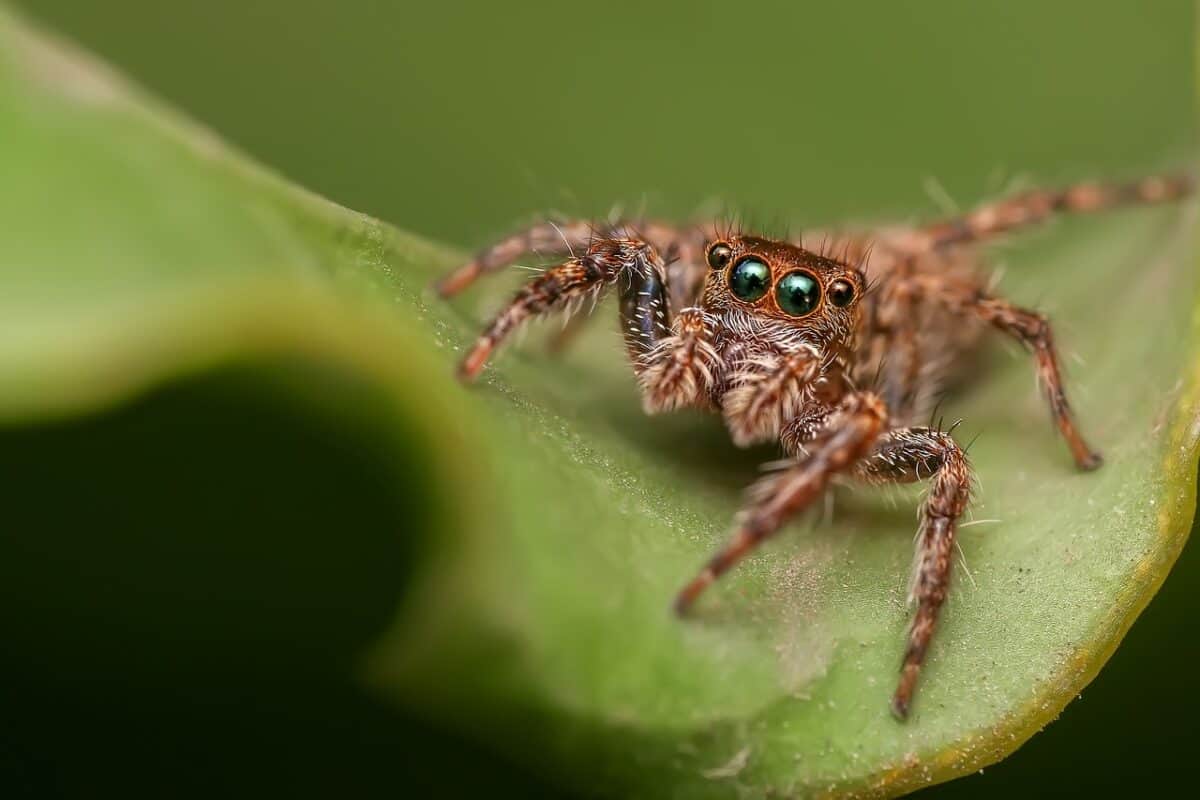Spiders provoke diverse emotions ranging from fascination to fear, yet these remarkable arachnids contribute significantly to various ecosystems, primarily through their intricate web designs. Webs are not only a marvel of natural engineering but also an exquisite reflection of each species’ unique behaviors and adaptations. Here, we delve into twelve spiders celebrated for their distinct web designs, unraveling the artistry and purpose behind their silky creations.
12. Golden Silk Orb-Weavers

The Golden Silk Orb-Weavers, known for their impressive webs, shine quite literally with a golden hue. These spiders, mostly found in warmer regions globally, produce silk that appears golden in sunlight. Their webs can span over a meter in diameter, designed to capture a variety of flying insects. The striking color may either camouflage the web or attract bees and other pollinators, enhancing their odds of capturing prey.
11. Spiral Orb Weaver

The Spiral Orb Weaver is renowned for crafting highly organized, spiral-shaped webs. These webs, characterized by intricate spirals and radial patterns, are not just aesthetically pleasing but extraordinarily efficient in entangling unsuspecting insects. Each web’s design is precise, optimized for strength and flexibility to endure environmental pressures like wind or rain.
10. Garden Cross Spider

Known for their cross-like patterns on their abdomens, Garden Cross Spiders spin webs that are both symmetrical and effective. Predominantly found in Europe and some parts of North America, these spiders use their webs to trap flying insects. With an instinctive prowess, they often consume and rebuild their webs daily, keeping them in optimum condition for catching food.
9. Black and Yellow Garden Spider

The Black and Yellow Garden Spider, also termed the Writing Spider, weaves a unique zigzag pattern called a stabilimentum into its web. This spiral silk feature is theorized to provide visual cues for birds, preventing the web from being destroyed. Its impressive design serves multiple functions, including camouflage and added web strength.
8. Feather-Legged Lace Weaver

Feather-Legged Lace Weavers create webs that appear more disordered and lacking the traditional orb design. Their tangled webs are constructed in confined spaces like corners, where they lie in ambush. The silk they use has a woolly appearance, making their webs highly effective at capturing prey by increasing the silk’s contact surface area.
7. Venus Spider

The Venus Spider stands out with its construction of tent-like structures in bushy vegetation. These unique webs are designed to ensnare insects that fly too close to the ground. Their complex, layered webs offer insight into the spider’s interaction with its environment, prioritizing a strategic, three-dimensional approach to hunting.
6. Spiny Orb-Weaver

The Spiny Orb-Weaver is easy to spot due to its unique, spined appearance and the finely detailed webs they spin. Common in the southern United States to Argentina, these spiders build small but incredibly symmetrical orb webs. Their bright coloration and web structures symbolize their adaptation strategies against predators and environmental challenges.
5. Bolas Spider

Defying conventional web-spinning techniques, the Bolas Spider uses a single silk thread with a sticky “bola” at the end, reminiscent of a fishing line. This adaptation allows it to catch moths by mimicking the pheromones of female moths, luring the males close enough to ensnare them with their swinging silk.
4. Hammock Spider

Hammock Spiders create expansive, sheet-like webs suspended over a network of non-sticky lines. These webs serve a dual purpose: as a base for the spider to rest and as a trap for insects that either fall into the sheet or get caught in the tangle beneath it. This design showcases an evolutionary advancement in preying techniques among spiders.
3. Trapdoor Spider

Unseen and secretive, Trapdoor Spiders construct burrows with camouflaged silk-covered trapdoors. Rather than using a web for capturing prey, these spiders rely on their silk-lined traps to ambush insects that pass by. Their skillful construction demonstrates the wide array of silk uses within the spider world, beyond traditional webs.
2. Dome Web Spider

The Dome Web Spider forms a tent-like structure that serves as both a trap and a shelter. Known for its dome-shaped web, it weaves a network of silk that attracts and entangles prey within its sticky strands. This spider showcases the diversity of web applications in protecting its home and providing a vantage point to surprise unsuspected insects.
1. Brown Recluse

Though not known for elaborate web designs, the Brown Recluse’s irregular webs fit its reclusive nature. Often hidden in dark, undisturbed spaces, these webs act as a practical structure for shelter rather than trapping prey. Despite its web’s minimalist design, this spider’s stealth and hunting prowess make it a formidable presence in its domain.
These twelve spiders demonstrate the astonishing variety of web designs in the arachnid world, each a testament to unique evolutionary paths and ecological roles. While webs primarily serve as hunting tools, their complexity and functionality extend far beyond mere prey capture, embodying the survival strategies honed over millions of years. Through understanding and appreciating these intricate designs, we gain greater insight into the ecological balance maintained by these remarkable architects of nature.
- The Coldest Town in America—And How People Survive There - August 9, 2025
- How Some Birds “Steal” Parenting Duties From Others - August 9, 2025
- 12 Deep-Sea Creatures You Won’t Believe Exist - August 9, 2025

